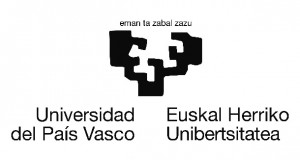In the last years has been highlighted the relevance of transition metals as catalysts in oxidative damage processes involving biological macromolecules. Recent studies have shown that transition metals like Fe, Cu, Cd, Cr, Pb, Hg, Ni and V possess the ability to generate reactive oxygen and nitrogen species, ROS and RNS, that is, radicals concerned in biological reactions which may cause severe damage in a wide range of molecules, producing, among other effects, lipid peroxidation, DNA damage, dramatic sulfhydryl decrease, protein alteration, etc., symptomatic of different diseases such as cancer, vascular affections, neurological disorders (Alzheimer’s and Parkinson’s disease), etc.
Another aspect of the role of transiton metals in biological systems is the enzymatic capability of metal clusters. The iron-sulfur clusters are ubiquitous in biological systems and may be found in the active site of a wide variety of metalloproteins and metalloenzymes, which are involved in biological processes such as electron transfer (ferredoxin), small molecule activation (nitrogenase, hydrogenase, carbon monoxide dehydrogenase), radical-based catalytic transformations (hydrogen abstraction, sulfur insertion in biotin synthase), DNA repair and signal transduction. The most common clusters are the following: [Fe2S2], [Fe3S4] and [Fe4S4], and their primary function lies in the mediation of one-electron redox processes. In these polymetallic systems, the Fe atoms present several oxidation states with unpaired electrons that can be coupled by magnetic interactions, giving rise to a dense manifold of ferro- and antiferromagnetic electronic states which may be separated by small energy differences. In this way, a detailed knowledge of the cluster electron delocalization in the cluster in terms of Fe-Fe interactions is a key point in order to understand the properties of both the ground and excited states. Thus, the elucidation of the electronic structure is relevant since it will affect the reactivity.
The gathered knowledge has grown in the last years, however, there are few aspects which need to be clarified yet. For example, different mechanisms of the previously mentioned reactions have been proposed in the literature, both theoretically and experimentally, but in most cases the results are not concluding. Furthermore, the determination of the electronic structures is difficult due to the fact that the description of these radicals demands methods capable to properly tackle near-degeneracy and spin-conserving effects. The great complexity in these processes requires an analysis from a fundamental point of view, in which the quantum theoretical chemistry plays an important role.
The aim of this project is the description of the electronic structure of iron-sulfur clusters, both as bare clusters and coordinated with organic ligands, in different oxidation states. Besides, molecular properties related to these structures, such as ionization potentials, electron affinities, bond strengths and dipole moments will be investigated as well. In order to achieve these goals, the PNOF5 method together with the CASSCF/CASPT2 approach will be used.


